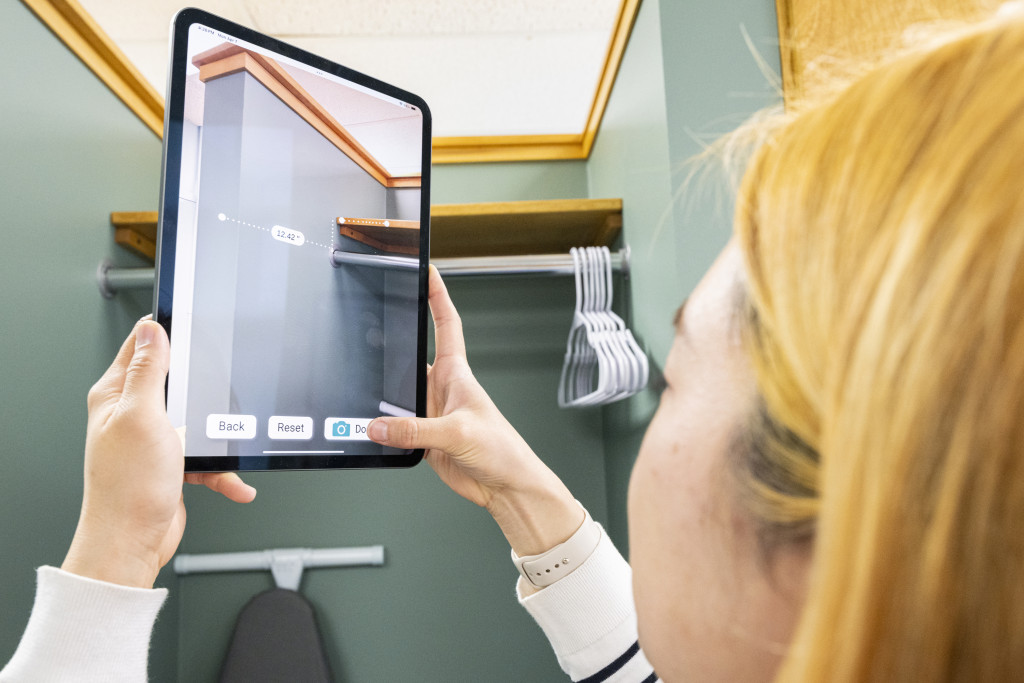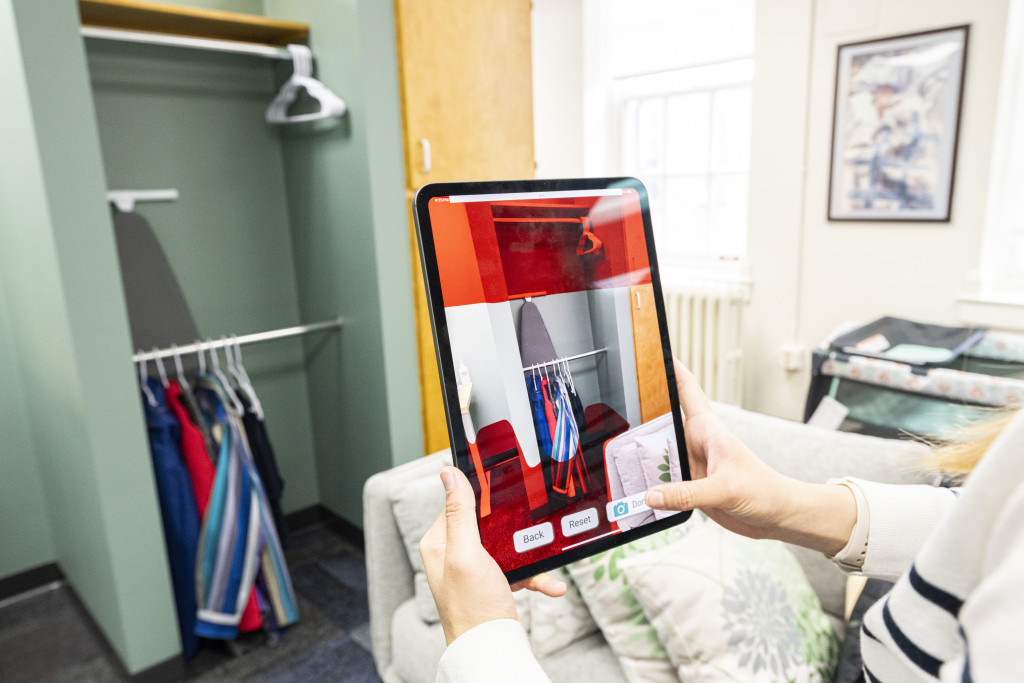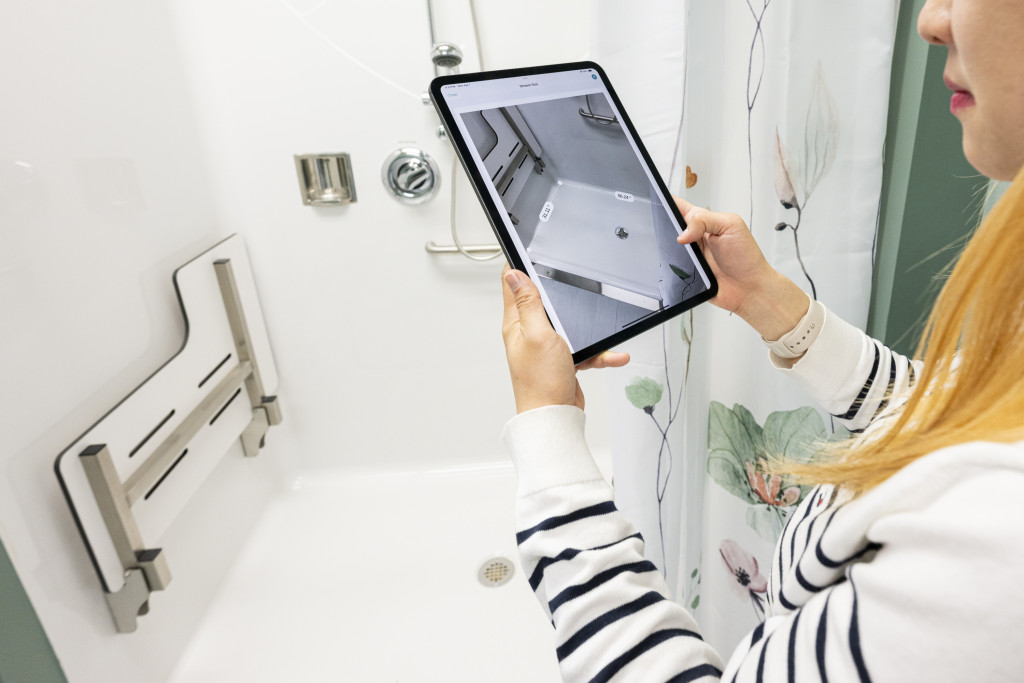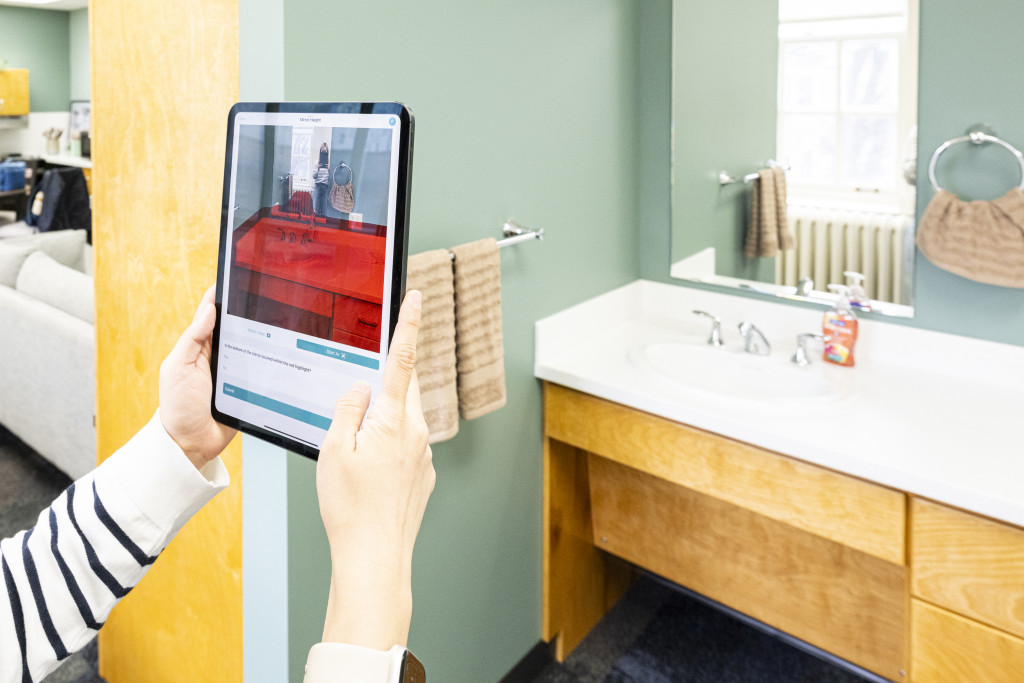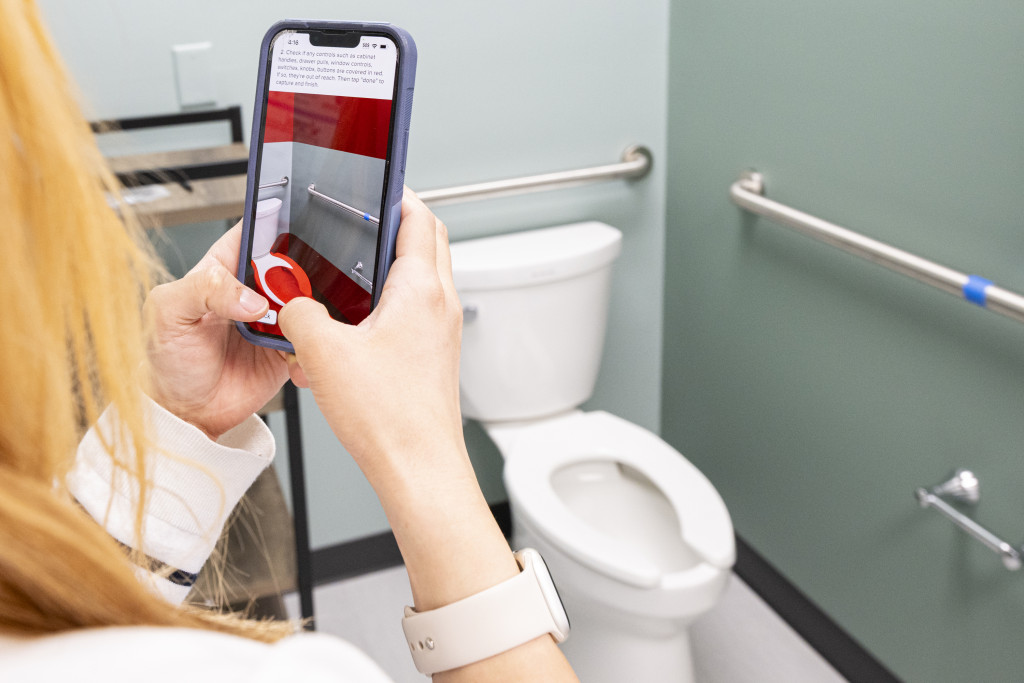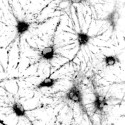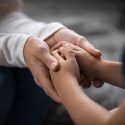App under development at UW could make it easier, more affordable to ‘age in place’
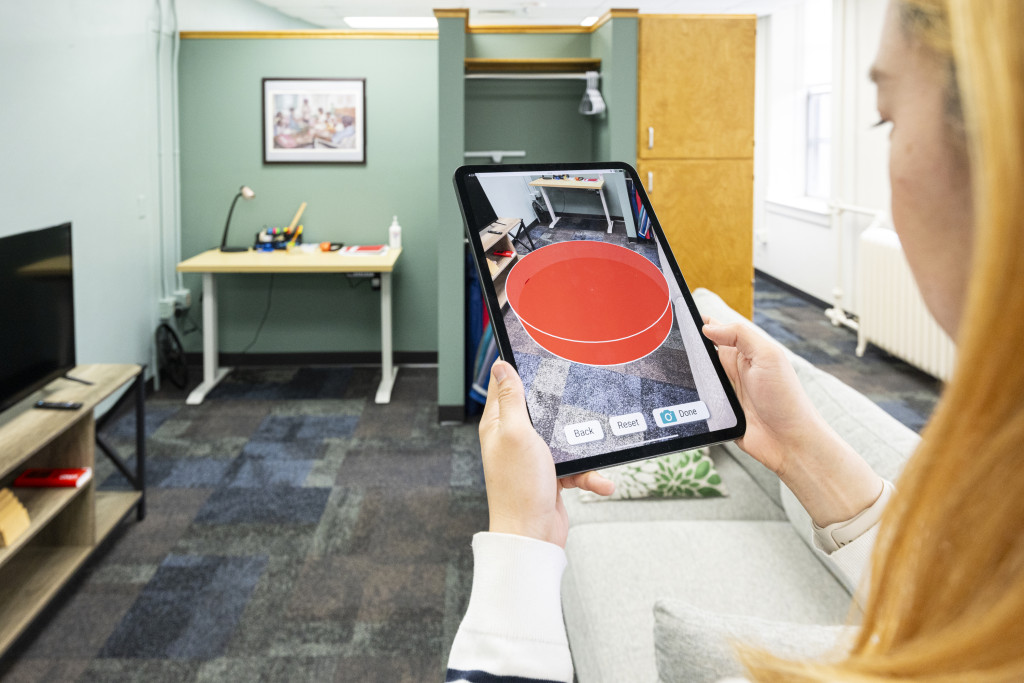
Graduate student Dowon Lee demonstrates a new app that the School of Human Ecology (SoHE) and Kinesiology professors are developing that users could use to get recommendations for retrofitting their homes with mobility/accessibility in mind as a free alternative to expensive in-person assessments. Photo: Bryce Richter
University of Wisconsin–Madison researchers are using augmented reality to make the homes of older adults safer. Their innovation will not only streamline a sometimes clunky process but also support a more affordable and community-based approach that can reach more people.
It’s an urgent issue: Older adults in Wisconsin have the greatest chance of death after a fall. And as people live longer and healthier lives, the number of older adults in the U.S. is growing quickly. It’s estimated that, within the next decade, one out of every three households in America will be headed by someone 65 or older.
This means “anything we do to prevent falls is really important,” says Ann Albert, the executive director of Wisconsin-based nonprofit AgeBetter.
One way to improve safety is through a home assessment, which looks at the current state of a home and recommends building alterations that support people whose functionality levels are changing — things like adding grab bars in the shower or a ramp to the front door entryway.
Along with improved safety, adaptations like this can make everyday tasks easier with less help needed from others, improving people’s overall well-being and quality of life.
AgeBetter’s Safe at Home program, offered at no cost, is one such program in Wisconsin that offers free or low-cost home safety assessments to prevent falls and, following the assessment, provides recommendations and connects participants with building professionals and other helpful community resources.
But without these programs, getting a home safety assessment can be prohibitively expensive, often costing hundreds or even thousands of dollars. Additionally, the availability of professionals to perform an assessment in less urban areas is often limited. For many older adults, their best option is to be approved for home health services, which requires an order by a medical doctor and a waiting list or a requirement that the person is homebound.
Enter the Augmented Reality Home Assessment Tool, or ARHAT. Currently in prototype form, the tool takes users through a step-by-step process that measures relevant parts of a living space and offers suggestions to make it more accessible.
The project team is led by design studies department chair and professor Jung-hye Shin; design studies professor Kevin Ponto, also a faculty member in the Wisconsin Institute for Discovery’s virtual environments group; and Beth Fields, an occupational therapist and associate professor in the kinesiology department.
“The first time Jung-hye had us all do the paper and pencil version of the assessment, I thought, whatever we do with this project is going to be better than the status quo,” Ponto says. “It’s brutal to go through these questionnaires and forms and try to translate them and figure out how it works. That’s where we saw an opportunity.”
An ARHAT user is prompted to choose from 14 common functional limitations — things like visual impairment, poor balance or wheelchair use — and then select the areas of the home to evaluate, such as the entryway, the kitchen and the bathroom. Follow-up questions and prompts for measurements are tailored to the user’s answers, with the option to add notes and take photos.
Then, the tool uses a LiDAR scanner — technology built into every iPhone and iPad Pro since 2020 — to measure elements in the home. (ARHAT also allows users to input manual measurements.) By superimposing visuals in the space as seen through the device’s camera, the tool will instantly let you know if something in the home is an accessibility barrier.
At the end of the assessment, a detailed report including a list of measured barriers, relevant Americans with Disabilities Act (ADA) guidelines and suggested design solutions is generated. The report will also include any notes or photos the user added while taking measurements, and it can be exported as a PDF.
Using ARHAT is faster and more accurate than manual measurements, according to the team’s research. It’s also much easier to use, and people involved in the testing felt much more confident about their measurements, which Ponto calls “a huge win in terms of what this technology has to offer.”
Ponto and Shin came to the project through an interest in improving accessibility in physical spaces and supporting “aging in place” efforts, or an older adult’s ability to stay in their own home as they age — an option many older adults would prefer. Fields, who also does pro bono work for AgeBetter, came aboard later to offer input from an occupational therapist’s perspective.
“I thought what they were doing, as far as the tech and the design aspects of the mobile-based app, was really innovative and could be really beneficial to clinicians like myself in the field,” Fields says.
Design studies PhD student Dowon Lee and mechanical engineering alumnus Ren Chang were key contributors to the tool’s current iteration, and students, alumni and staff from the School of Human Ecology and the Wisconsin Institute for Discovery have helped develop the tool’s augmented reality elements and tested its functionality.
ARHAT’s developers are currently targeting the tool for use by occupational therapists and similar professionals — their research showed some older adults had difficulties getting the tool up and running on a device and with things like the “pinch to zoom” function.
The team plans to test an updated version of the tool with older adults and their families this fall. They hope virtually anyone will be able to use a future iteration — ideally one available through the Apple app store.
With ARHAT progressing, professionals are enthusiastic about what such a tool will mean for them and the people they serve.
“The fact that you can use your phone and do all of those measurements digitally versus manually will be such a time saver, and a cost saver for health care agencies and systems, because you’re going to be able to be more efficient,” Fields says.
AgeBetter’s Albert agrees.
“It’s exciting,” she says. “I think it’s pretty remarkable that it can be done so simply and someone can get that information in real time.”
Tags: aging, School of Human Ecology, technology

